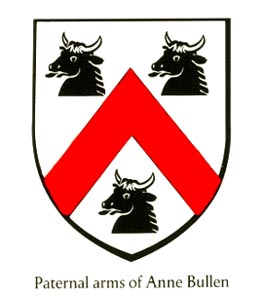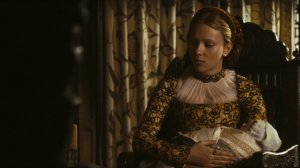Boleyn Family-A Story of Pride and Extreme Predjudice
I’m a sucker for the Tudors. I love that period of history. I’m half English myself so it cuts deep. I love costumes and the velvets and rich damasks and the tales of courtly love when Ladies were Ladies and Gentleman got down on bended knee for a whiff of their heart’s desire. Today, the men I see on trains would push me away for a seat. Sigh. But I wonder if I could really hack it at the Tudor court. All is not what it seems. Soft velvets won’t break your fall if you happen to be born on the wrong side of the blanket.
Whether you prefer the old English Bullen or the fancified Boleyn spelling, they were a family to be reckoned with. They came, according to the genealogy from Norfolk County, England. We’re concerned with the Fifth generation. Sometime between 1500-1504 Mary was born. She was the eldest of the family trio who landed at court and became embroiled in a scandal that destroyed the Boleyn name and the family reputation. Next to nothing is known about her-except she was schooled in France like Anne and became Henry’s mistress. She bore him a son. She seems to have quietly faded into the background, rather than stepped aside for Anne as Philippa Gregory suggests in, The Other Boleyn Girl.
Whether the two were close or rivals is unknown and pure speculation. But that’s fiction, right? Brilliant. Gregory came under fire for her historical inaccuracies, and her portrayal of Mary as innocent bystander. What Gregory was doing was putting a fresh spin on a story that has been told over and over (and keeps us coming back!). The story is written first POV through Mary’s eyes, the perfect showcase for a new telling of the Anne and Henry saga. Nothing particularly new to add. Nothing that doesn’t fall lock-step with what we’ve already heard. Great story though. If you understand story, you understand why Gregory had to make Mary the perfect-root-till your drop protagonist and Anne the selfish, if a bit unbalanced antagonist. Story. Not history. I love the book. It’s well written and one of my favorites, but if you’re a history-lover you’ll take umbrage with the main premise. There is no evidence Anne Boleyn was guilty of any of the crimes she was convicted of, much less incest with her brother George. Not one man would dare to go against the king. Not even Anne’s uncle.
Now that we’ve moved away from story, I’ve always hated that particular incest charge, because it’s so unbelievable, it’s overkill and once again we see George’s name dragged through the mud. Unimaginative. Give me a George who is heroic. He was born around 1503, not much is known about him either but he has gone down in history as the most hated Boleyn because of what he may have felt for his sister. I don’t buy it. It’s too bizarre.
Now we come to Anne. All too often, history has portrayed Henry’s second wife as a termagant and a shrew. Well, she did persuade a king to divide his church and cast off his wife. She was born sometime around 1501. Sent to the French court as a young girl, she came back a woman of intrigue. She was not an English beauty with thick blonde hair and rosy cheeks or a well-formed bosom, but possessed a sallow complexion, with sleek dark hair that matched her keen, black eyes. She was confident and dressed well. No gable hoods for her. She wore French. Witty, and quick-minded, she was bound to attract attention.
Eric Ives, preeminent historian accuses Thomas Cromwell as the architect in Anne’s downfall. We know that she didn’t get a fair trial-her own uncle, the Duke of Norfolk sat in judgment of her. The charges against her. Adultery. Treason. And, Witchcraft. The confessions extracted by torture from the men accused of committing adultery. Remember, this is an era where one’s religious life was of the utmost importance, and Henry wanted to get rid of Anne. He saw he could do it before with Katherine, and he wanted out. What better way to absolve himself of a woman he despised by claiming he was bewitched?





